You may be hesitant to get indoor plants for your office if your green thumb is a little off-coloured; but research by Nursery & Garden Industry Australia indicates the benefits are well worth it. Over a three-month period, the University of Technology Sydney (UTS) tested the impact of plants on stress and negative and with these results:
“Staff who had plants placed in their offices showed reductions in stress levels and negative feelings of a magnitude of 30 to 60%, while those with no plants recorded increases in stress and negativity of 20 to 40%.”
So, it’s pretty obvious you need to get some greenery in your office stat. But what indoor plants look good AND are low maintenance? Don’t worry—we’ve got you back.
What to look for in an office plant:
- Low or no need for watering.
- Low or no need for fertiliser.
- No strong scents.
- No messy pollens.
- Suitable for your lighting options.
- The right size (fully grown) for your space.
Our favourite low-maintenance indoor plants for the office.
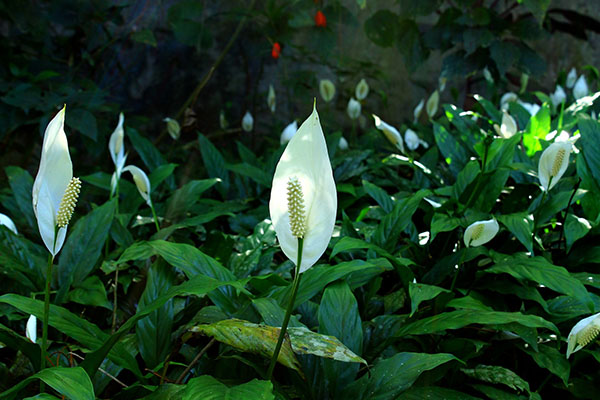
Peace Lily
Key mentions:
- Ideal for indoors if kept out of direct sunlight.
- Soil must be kept damp but not wet, so watering is minimal.
- Only requires a quality, controlled-release fertiliser once a year.
- Re-potting is required every 12 to 18 months to refresh potting mix.
- Poisonous to cats and dogs.
Air-conditioned office? No worries. Not a lot of sunlight? Bring it on. Tend to forget to water plants before the weekend? That’s okay. The Peace Lily can handle it.
You’ll find the Peace Lily on almost all lists of indoor plants almost impossible to kill—and for good reason. They only need to stay damp as they don’t handle sitting in water or being too wet. And being in direct sunlight is actually something you should avoid altogether. As for keeping dust off your plant, a quick run under a spray hose or a damp cloth is more than enough.
Parlour Palm
Key mentions:
- Prefers indirect sunlight and low-light environments.
- Slow grower, with a full height of 3 to 4 feet over a few years.
- Best to let soil dry in between watering and only to dampen, not wet.
- Can be overcrowded with several Parlour Palms in one pot.
- Will need re-potting as it grows and fertilising every few months.
Bring the tropics indoors with a Parlour Palm. These plants make incredible air purifiers and don’t mind receiving very minimal sunlight, so if your office only gets morning or afternoon lights, it’s perfect for your palm.
Caring for your parlour palm will be quite easy as they’re known as slow growers. It can take years for your palm to actually reach its full height of 3 to 4 feet, so potting will only be as required. While you can group many Parlour Palms in one pot, it will mean you need to fertilise your plants more often—but it’s up to you if you want one or a cluster.
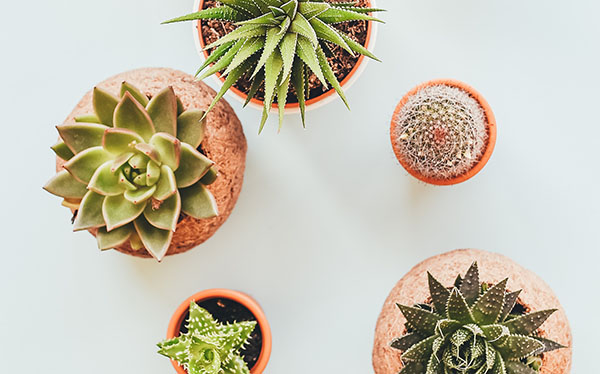
Succulents
Key mentions:
- Thrive in direct sunlight, so perfect for windowsills.
- Can adapt to infrequent watering.
- Requires soil mix created for succulents.
- Not suitable for cold temperatures.
- Multiple types available.
While there are plenty of succulents out there, and all require slightly different types of care, most will thrive if left in the right spot, with the right soil and a good watering every now and then. Succulents are known as desert plants, so they don’t deal well with the cold, but a nice warm windowsill with plenty of sunlight will fix that problem.
As for watering, their hardiness to drought means you can get away with a good soaking every now and then. It’s worth talking to your local nursery about the best type of succulent for your office and the level of care you want to put in.
Snake Plant (Mother-in-Law’s Tongue)
Key mentions:
- Hard to kill.
- Prefers to be kept out of sunlight.
- Only requires watering every few days.
- NASA recommended for purifying air.
- Perfect for room-temperature spaces.
The Snake Plant (AKA Mother-in-Law’s Tongue) can survive in almost any climate and takes a high level of neglect to kill it off. It doesn’t need any sunlight and can forego watering for days at a time.
At night, the plant actually converts CO2 into oxygen, and is recommended by NASA for improving air quality. Although for optimal filtering of formaldehyde, trichloroethylene, xylene toluene and benzene, it’s recommended you have 6 to 8 waist-high plants per person, so you may not get full benefits of this.
Spider Plant
Key mentions:
- Can easily be propagated to create more Spider Plant pots.
- Good for purifying the air.
- Thrives in partial light and shaded areas.
- Requires dusting to ensure pores aren’t clogged.
According to research performed by the Plants and Urban Air Quality Group from the School of Life Sciences, greenery such as the Spider Plant, can reduce indoor CO2 levels in the air by up to 13 to 23%. If that’s not enough, the Spider Plant is extremely easy to care for and only requires watering every one to two days, so is perfect for over the weekend.
Of course, once one person in the office sees your amazing Spider Plant, they’ll want one too. All you need to do is fill a pot with good-quality soil, taking a small clipping of your plant and the new one will thrive.
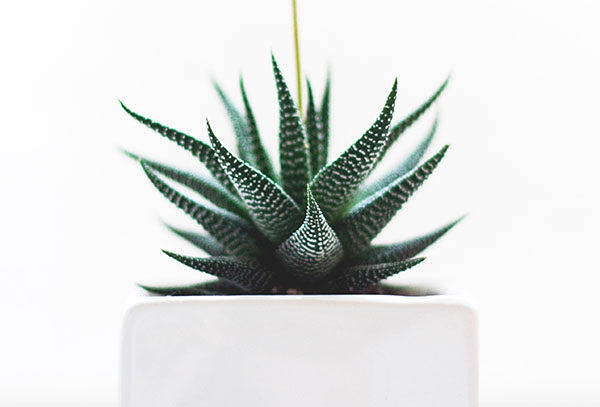
Aloe Vera
Key mentions:
- Only requires watering every couple of weeks.
- Aloe gel can be used for minor burns, bites, scrapes, etc.
- Does require daily sunlight.
- Best planted in cactus potting mix or standard soil with perlite.
- Can die if overwatered.
We know we’ve already covered succulents, but we can’t go past Aloe Vera. With almost no need to fertilise and only requiring watering every few weeks, it’s the perfect plant for the busy person or frequent traveller.
Better still, the gel from your Aloe plant can be used on those annoying papercuts. Be sure to let your Aloe Vera plant dry out completely before watering and have good drainage and you’ll have the perfect relationship.
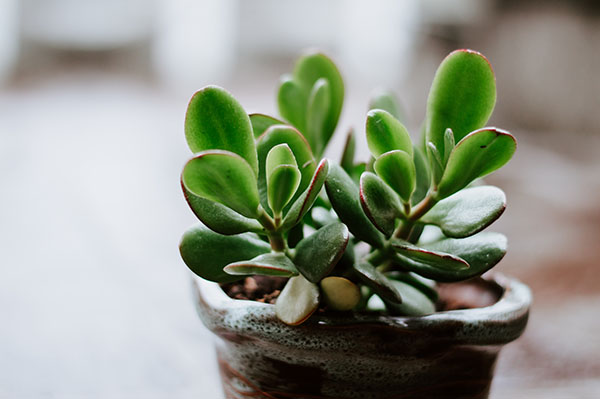
Jade Plants
Key mentions:
- Known as a symbol of good luck.
- Best placed in bright light.
- Overwatering can kill the Jade.
- Requires fertilising roughly every 6 months.
“Jade by the door, poor no more.” It’s extremely popular to place a Jade plant by the front door of your home, office or restaurant to welcome money and happy customers. Aside from this, Jade is an extremely easy plant to care for.
To start, ensure you place your Jade somewhere with plenty of natural sunlight. When it comes to keeping your plant well-watered, leave to dry out completely in between each watering. Every 6 months or so, use a general fertiliser with low NPK (nitrogen, phosphorus and potassium).
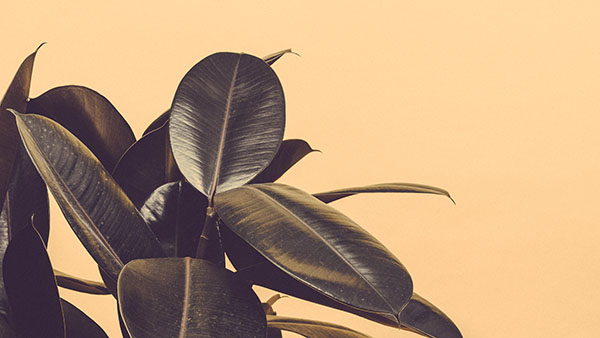
Rubber tree Plants
Key mentions:
- Must be kept in a smaller pot to keep it from growing to full height.
- Best to purchase a younger plant to get it used to indoor conditions.
- Pot must have adequate drainage and aeration.
- Place in the bright light but not in direct sunlight.
- Warmer environments will require more frequent watering.
Fun fact; the Rubber tree/plant can grow up to 50 feet tall, if allowed. To prevent this, purchase a young plant and keep it in a smaller pot to restrict its growth—although it still won’t be a desktop plant.
A tip for caring for your Rubber tree/plant is to use lukewarm water. This helps the chlorine in the water to evaporate, which reduces shock to the roots of the plant. When the plant’s leaves look a little droopy, it’s a sign it needs a good watering.
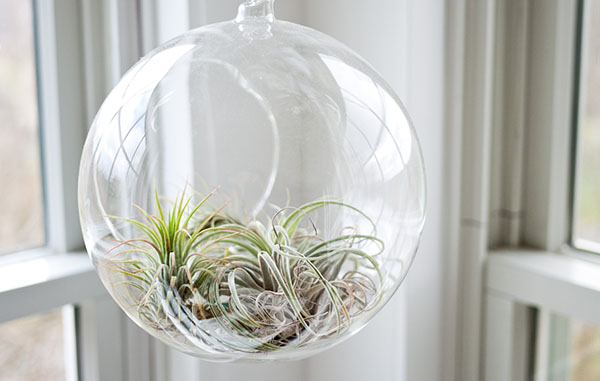
Air Plants
Key mentions:
- No soil required.
- Both small and large sizes available.
- Thrive in natural light.
- Can be ‘potted’ in a variety of ways.
The Air plant gets its name from its ability to extract water from the air, so no soil is required. All their roots do is keep them fixed to other plants, rocks, branches, etc. For the creative, it means you can style Air plants in a number of different ways, using gem stones or other features to create an attractive display.
While Air plants love natural light, fluorescent lighting can also do the trick. Watering is a little different to a ‘normal’ plant. Your best bet is to either mist the plant or soak it in a bowl of roof-temperature water for up to 10 minutes every week or two. Whatever you do, don’t leave it in the water as they can rot.
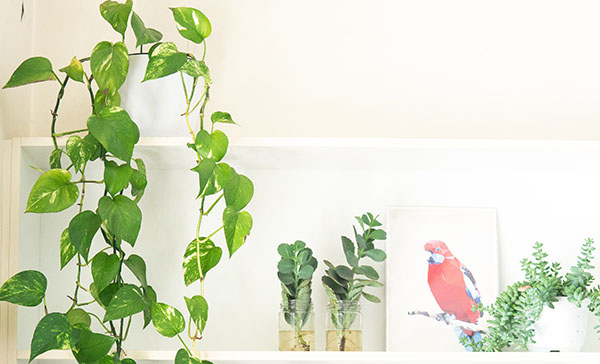
Devil’s Ivy
Key mentions:
- Recommended by NASA for air-purifying properties.
- Perfect for draping down shelving.
- Watering should only be done when soil is bone dry.
- Easy to propagate (create new plants).
Draping Devil’s Ivy can instantly add a stylish jungle affect in any office. It’s recommended to place this plant near printers and areas with a lot of computers as it’s ideal for purifying the air.
This is another one of those ‘but I want one’ type of plants. Simply take a cutting of the plant and give it to a co-worker who wants their very own jungle-vine styling in their workspace. Just be sure to let them know to let the soil dry out completely in between watering.
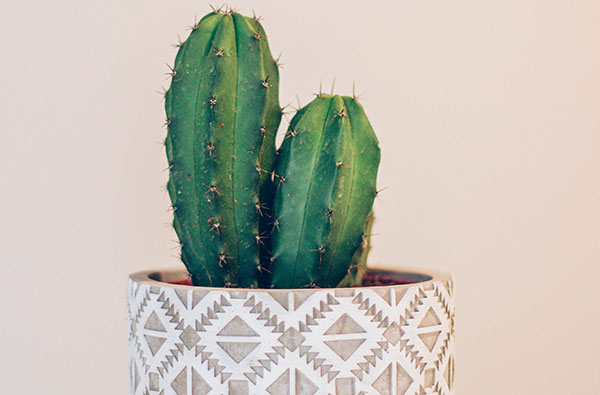
Cactus
Key mentions:
- Very low-maintenance.
- An abundance of styles, shapes, sizes and colours.
- Need to be placed in sunlight.
- Requires very infrequent watering.
Green, red, pink, yellow—the colours are endless when it comes to choosing a Cactus. These prickly little plants are used to drought conditions, so need plenty of sun but require very little water to survive.
Place a few Cacti on your windowsill and watch how many people still take a prod, even though they know those spikes are, well, spikey.
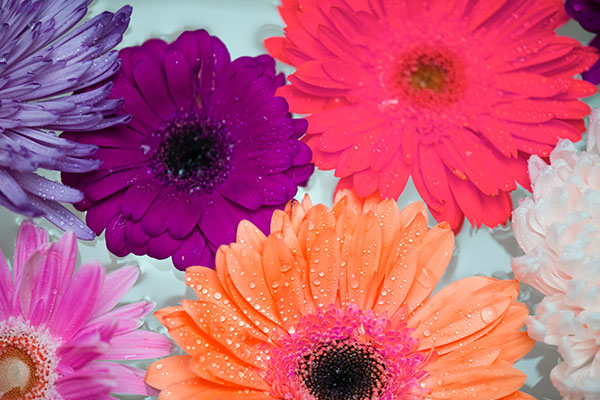
Gerbera Daisy
Key mentions:
- Purify the air.
- Small so perfect for desktops.
- Plenty of colour varieties available.
- Very little sunlight is required.
You may read about a Gerbera Daisy plant being difficult to grow indoors but let us guide you. Place your plant where sunlight can reach it for a few hours each day, give it a drink of water daily and you have yourself some colour in your office.
When you water your Gerbera Daisy plant, ensure you drain the pot’s drip tray first. While it’s a thirsty plant, it doesn’t appreciate bathing.
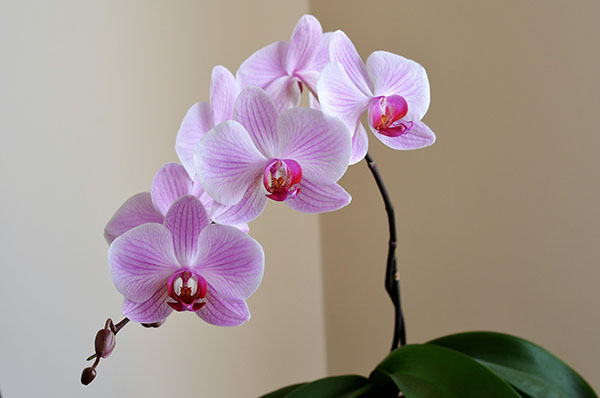
Orchid
Key mentions:
- Requires indirect sunlight to bloom but can grow well in some types of artificial light.
- Good air circulation is crucial for its survival, but a small desk fan may suffice.
- Thrive in humid, warm environments.
- Allow soil to dry out in between watering.
An office may not sound like the place for a plant that loves humidity, circulation and sunlight but hear us out. By misting your Orchid, placing it near a fan and where it can get a few hours of sunlight, you’ll be able to keep a flourishing plant.
When potting your orchid, use a soil or bedding with plenty of drainage, keeping the plant shallow in the pot. To ensure you don’t overwater, wiggle a finger a few centimetres into the soil, and if it’s dry, it’s time for a drink.
Where to get indoor plants for the office.
You’re probably dying to get some plants in your office. Heading to your local nursery will provide you with everything you need, as well as some expert advice for what plants to choose for your office space.
Got a green thumb? These blogs are for you:
- 4 low maintenance plants for your garden
- Refresh your gardens!
- Weed prevention tips to keep your garden beautiful
Find the best Nurseries and Garden Centres in Australia
- Nurseries and Garden Centres in Albury
- Nurseries and Garden Centres in Alice Springs
- Nurseries and Garden Centres in Ballina
- Nurseries and Garden Centres in Batemans Bay
- Nurseries and Garden Centres in Bathurst
- Nurseries and Garden Centres in Bega
- Nurseries and Garden Centres in Bundaberg
- Nurseries and Garden Centres in Caboolture
- Nurseries and Garden Centres in Cairns
- Nurseries and Garden Centres in Central Coast
- Nurseries and Garden Centres in Coffs Harbour
- Nurseries and Garden Centres in Darwin
- Nurseries and Garden Centres in Dubbo
- Nurseries and Garden Centres in Gladstone
- Nurseries and Garden Centres in Gold Coast
- Nurseries and Garden Centres in Grafton
- Nurseries and Garden Centres in Gympie
- Nurseries and Garden Centres in Hervey Bay
- Nurseries and Garden Centres in Lismore
- Nurseries and Garden Centres in Mackay
- Nurseries and Garden Centres in Maryborough
- Nurseries and Garden Centres in Mount Isa
- Nurseries and Garden Centres in Newcastle
- Nurseries and Garden Centres in North Lakes
- Nurseries and Garden Centres in Nowra
- Nurseries and Garden Centres in Orange
- Nurseries and Garden Centres in Parkes
- Nurseries and Garden Centres in Port Macquarie
- Nurseries and Garden Centres in Rockhampton
- Nurseries and Garden Centres in Shellharbour
- Nurseries and Garden Centres in Sunshine Coast
- Nurseries and Garden Centres in Tamworth
- Nurseries and Garden Centres in Taree
- Nurseries and Garden Centres in Toowoomba
- Nurseries and Garden Centres in Townsville
- Nurseries and Garden Centres in Tweed Coast
- Nurseries and Garden Centres in Wagga Wagga
- Nurseries and Garden Centres in Whitsundays
- Nurseries and Garden Centres in Wodonga
- Nurseries and Garden Centres in Wollongong





